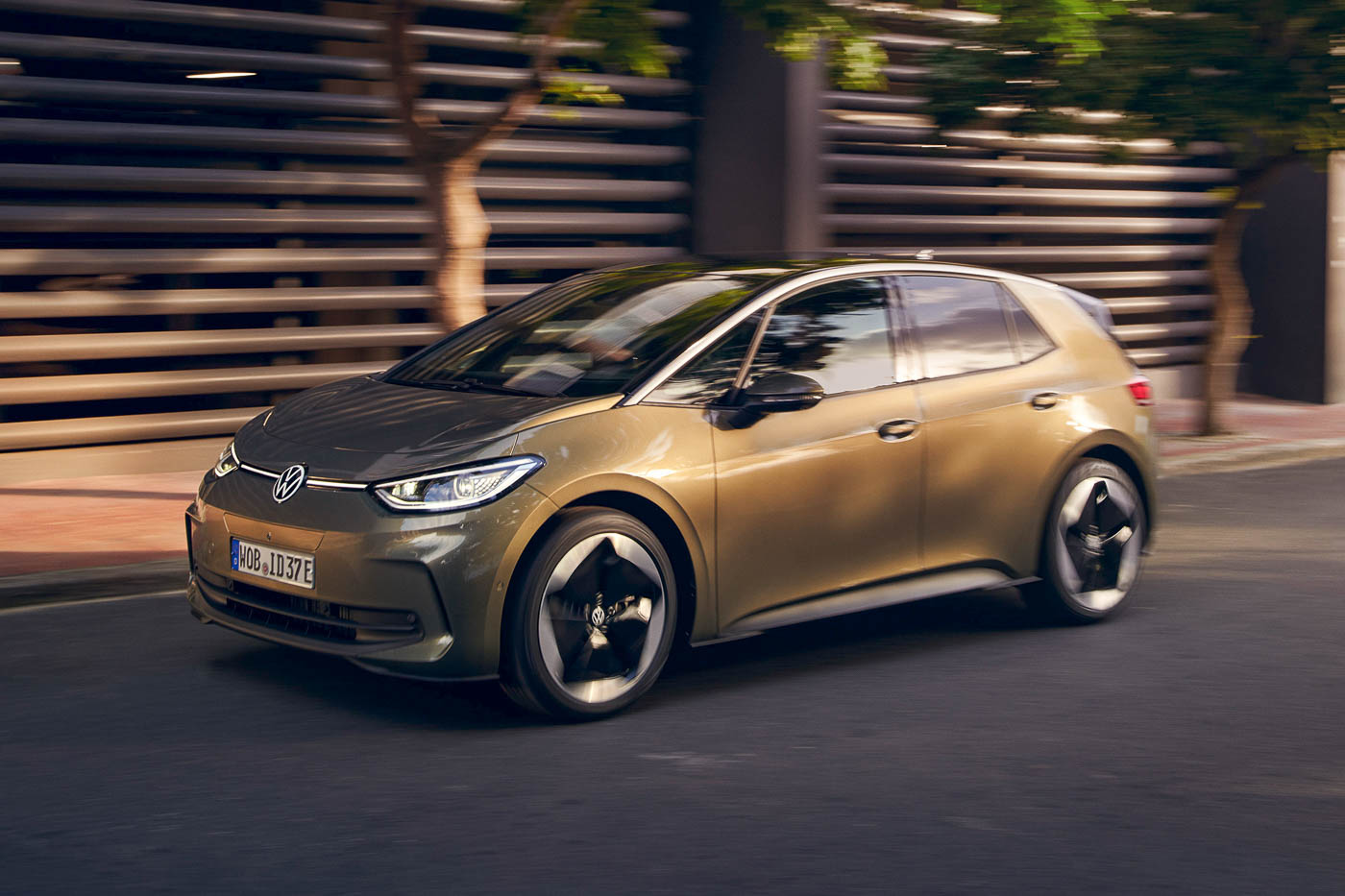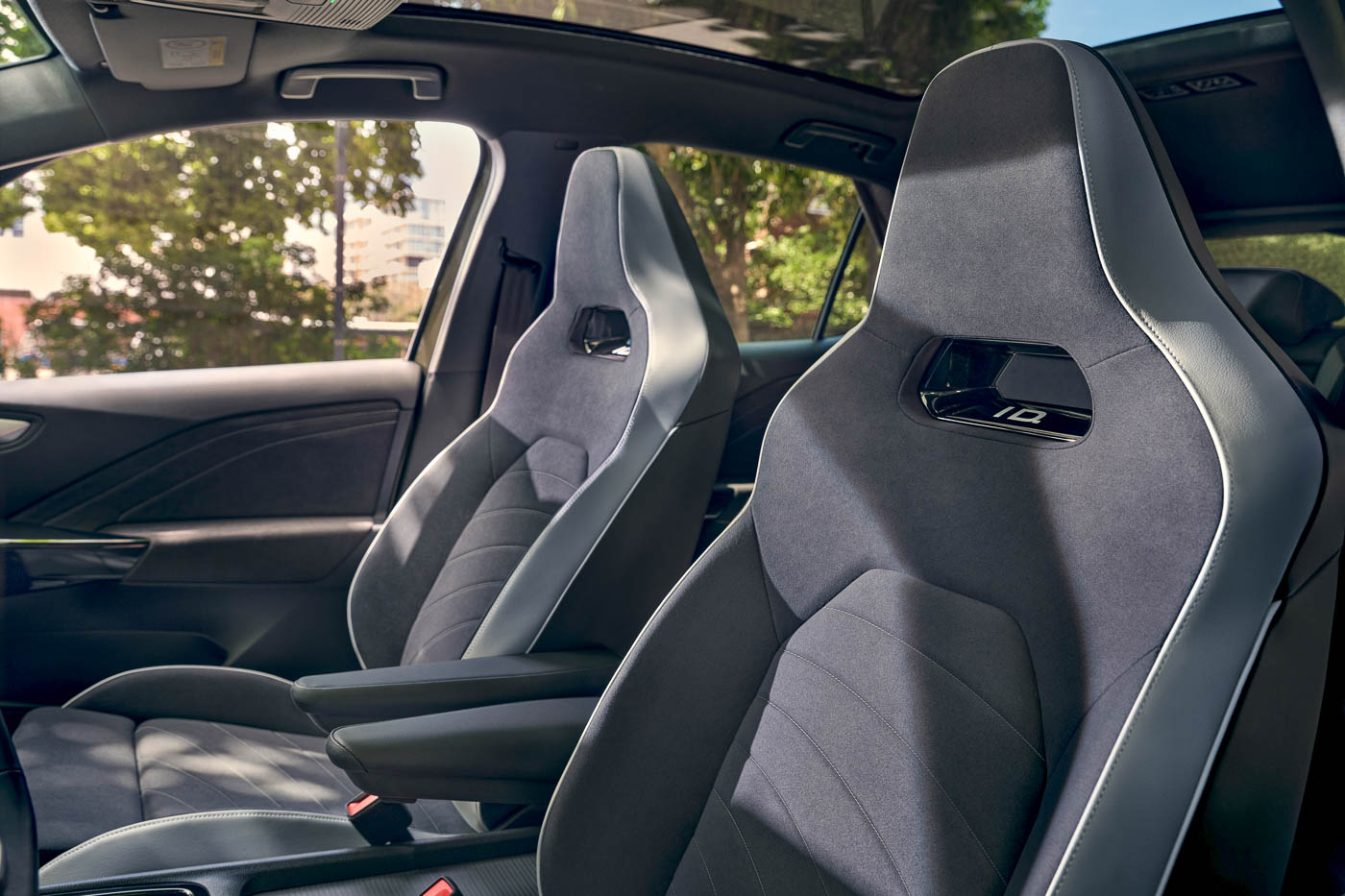The Volkswagen ID.3 is barely three and a half years old, but the German giant is already giving it a “second-generation” model. Before you get all excited, though, the 2023 Volkswagen ID.3 is really more of a mid-cycle facelift update than an all-new model; the only changes here are mild design updates, alongside some (much-needed) technology revisions on the inside.
On the outside, the main updates are seen on the front, with a re-profiled front bumper featuring new vertical air curtain intakes on the corners. The bonnet has also been updated as well, with an all-new panel pressing that does away with the black panel near the cowl, giving the ID.3 a slightly more conventional look, and a slightly improved drag coefficient.
Volkswagen says the tail lights have also been updated with a new X-shaped lighting signature that illuminates across the entire housing on the boot lid (as opposed to only the main enclosure on the pre-facelift). But the update that we’re genuinely most excited about is the new exterior colour pictured here, dubbed ‘Dark Olivine Green’, which comes with a blacked out roof and matte silver accents. Tasteful.
Inside, the most notable change comes in the form of an updated software on a new larger 12-inch central infotainment display, which is now standard across the range. The revised software promises improved performance across the board and revised UI/UX design, both of which perhaps sorely needed for the model; previous software issues and development delays were so significant that they were widely rumoured as the reason for Herbert Diess to step down as Volkswagen CEO last year.
Other interior changes include improved materials and more soft-touch surfaces across the cabin. The door cards have also been remodelled with larger and softer armrests, a change stemming from user feedback.
Powering the new 2023 Volkswagen ID.3 is the unchanged rear-mounted electric motor, which is rated for an output of 204 hp and 310 Nm of torque. For juice, buyers have two choices of lithium-ion batteries – a 58 kWh pack for the base Pro variant offering 426 km of range (WLTP), and a 77 kWh pack for the Pro S that serves up 546 km.
The larger battery does mean a slightly slower 0-100 km/h sprint time (7.9 seconds, 0.6 seconds slower than the Pro), although top speed is limited at 160 km/h on both variants.
The main update in terms of powertrain comes in the form of an uprated DC charging rate on the Pro S, now up to 170 kW, which shortens its charging time to 30 minutes (5-80%). The Pro will have to stick with a slower 120 kW DC charging rate, taking 35 minutes to charge from 5-80%.
GALLERY




























